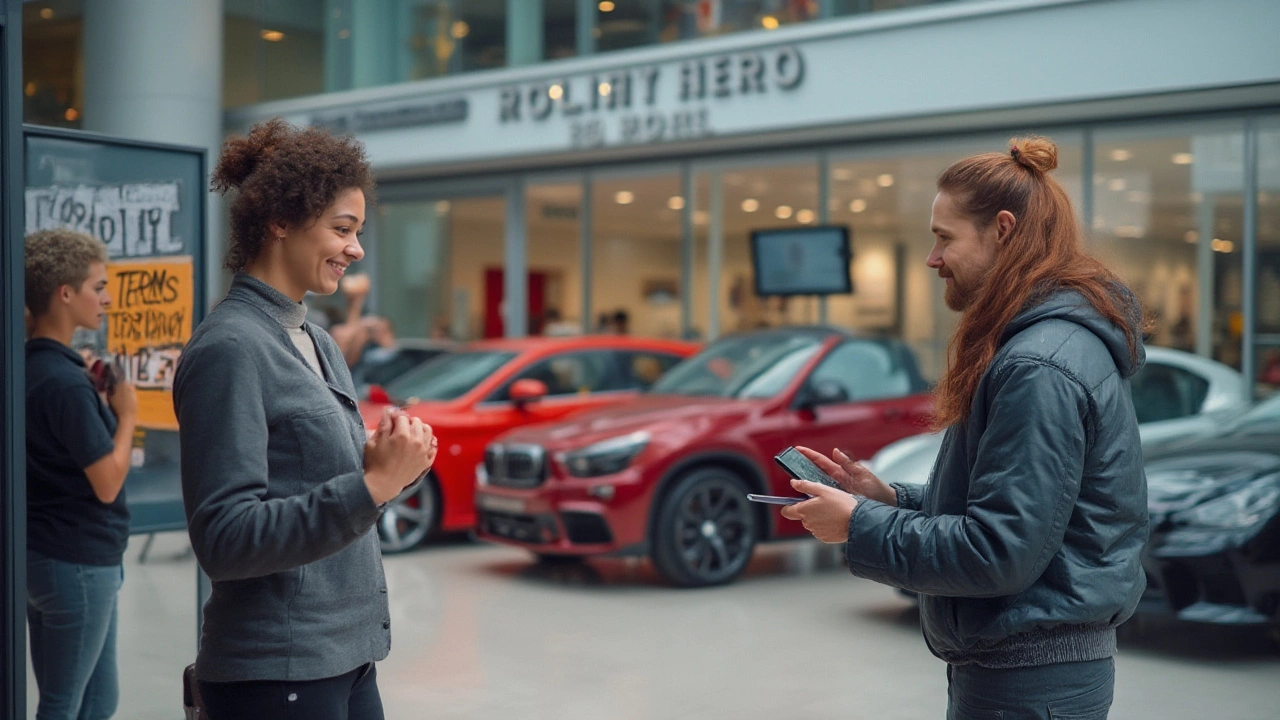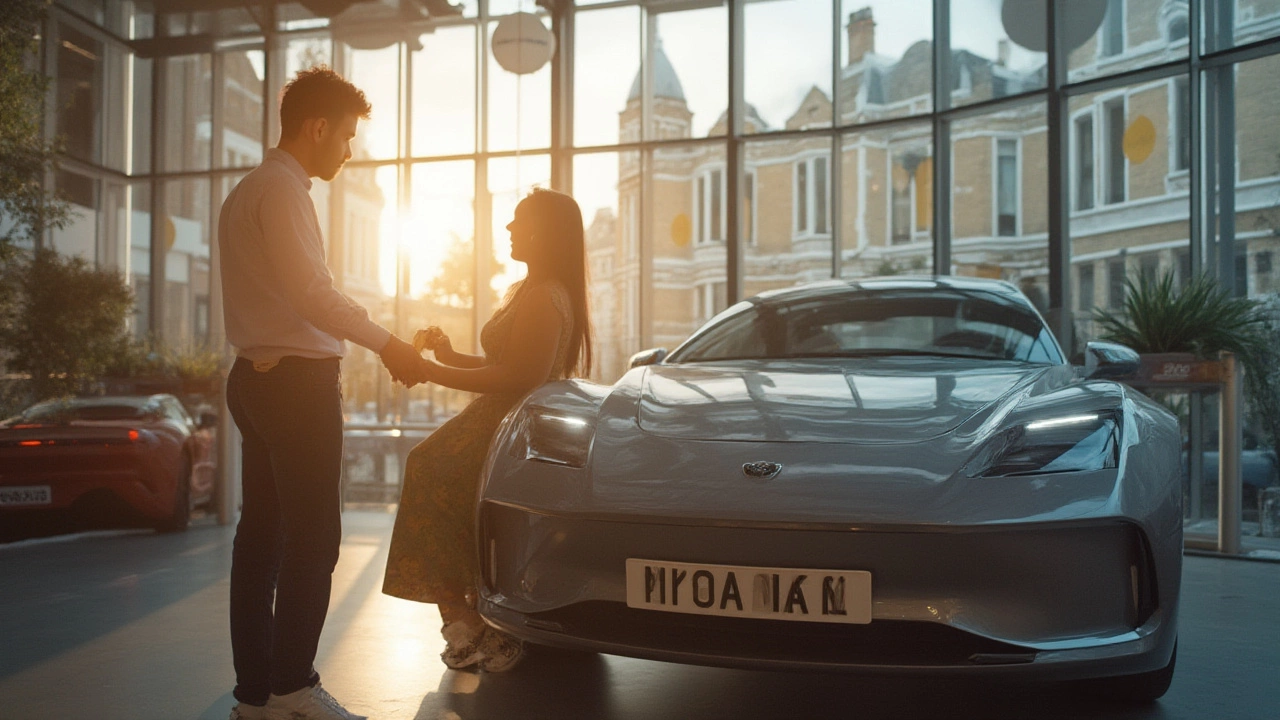Picture this—you’re standing at a dealership, heart set on trying that shiny hatchback or roaring SUV, wondering, “Do I need to pay to simply get behind the wheel for a test drive?” You wouldn’t be the first to think it. Some people treat test drives like window shopping, but others get jittery at the thought of extra charges or sneaky policies. Let’s unravel what dealerships actually do, what rules changed in recent years, and how you can use this knowledge to your advantage in 2025.
Test Drives in the UK: Free or Not?
Car test drives have long been a sales tradition. In most UK dealerships, the classic answer is: yes, test drives are free. You walk in, ask for a test drive, flash your full UK driving licence, and off you go for 10–30 minutes on pre-set routes. Why so generous? Dealerships know your excitement behind the wheel is the best sales pitch. According to a YouGov survey from 2024, 7 out of 10 new car buyers in the UK would not consider a purchase without a test spin.
But here’s where things get murky. While the “free” vibe is common, not every test drive is an all-access pass. Some high-end brands, performance cars, and bespoke models treat test drives as a privilege, not a right. For instance, select Porsche or Aston Martin dealers might ask for a refundable deposit or a modest fee—usually dropping it if you proceed to buy. Don’t be surprised if luxury dealerships check proof of insurance or even ask for a background check. These rules are less about making money, more about protecting valuable assets from joyriders or viral TikTok stunts gone wrong.
You’ll also run into policy differences with used car dealerships and “online-only” sellers. Certain independent lots started charging a nominal fee (think £20–£50), mainly aimed at filtering serious buyers from day trippers. Most reputable platforms like Cazoo, Cinch, or Carwow still offer no-fee test drives, sometimes delivered to your home, but often with small print: age limits, address verification, and a strict schedule.
So, to answer the core question: Nearly all mainstream test drives for new or regular used cars are free in the UK. Some exceptions exist—be ready for these, ask ahead, and don't hesitate to shop elsewhere if something feels off.
Why Do Some Dealers Charge? Hidden Costs and Exceptions Explained
Why would a dealer start charging for a test drive? It usually comes down to risk, cost, and crowd control. High-demand models and supercars attract dreamers who might have no real intention to buy. Every mile on the clock whittles down resale value—a real concern for small businesses.
Let’s get specific. A 2024 study from the National Franchised Dealers Association (NFDA) found that 15% of prestige or niche car retailers had introduced some form of fee or deposit for test drives over the past two years. This applies almost entirely to vehicles topping £80,000 or rare collector’s models. Even then, these fees are almost always refundable if you show you’re serious about buying.
With used cars, things can get quirky. Pop into Bob’s Budget Autos and you might see a “£10 test drive fee—deducted from sale if you buy” sign. That’s not a scam, just a tactic to weed out joyriders on a Saturday afternoon. Most big brand used dealerships—think Arnold Clark, CarShop, Evans Halshaw—stick with the free test drive policy, but still check your licence and sometimes require a credit or debit card pre-auth to cover accidental bumps.
Outside of luxury, a rare reason for a test drive charge is for at-home test drives, covering delivery expenses. For example, some London-based showrooms charge £30–£40 if you want them to bring a car far outside the M25. Standard on-site test drives? Still free. But if you’re booking a test drive outside your local area, always check for delivery or cancellation fees.
One last twist—seasonal events, driving days, and special “track days.” Here, brands want you to get the full experience, but you pay for the thrill, not the test drive itself. Jaguar Land Rover’s driving experiences in 2025, for example, run upwards of £150 but include off-road courses, snacks, and instruction.

What You Need: Test Drive Requirements in 2025
You can’t just walk in waving cash or with a cheeky grin and get the keys. Even for a free test drive, UK dealers now ask for a few basics. Top of the list: a valid UK driving licence (full, not provisional) held for at least 12 months. Some ask for a code from the DVLA to check your penalty points—easy to generate using the Gov.uk website in two minutes.
Here’s what most dealers want to see before you get the wheel:
- Valid full driving licence (card, usually both paper and photocard for older drivers)
- Proof of address (bank statement, recent utility bill)
- DVLA code (for penalty point check)
- Some luxury dealers: Your car insurance details, proof of funds, or even a soft credit check
Test drives are always accompanied for the first-timer—either by a salesperson, demo rep, or a 'buddy system.' Worried you’ll get the hard sell while driving? Don’t stress—most sales staff prefer to let the car do the talking, but if you want a solo slice, just ask. Since Covid, “unaccompanied” test drives became more popular, letting buyers get used to a car at their own pace. Dealers hand you a route map or program the nav. But you’ll almost always leave a card deposit as insurance.
A quick tip: Bring your own playlist or phone mount. You’ll want to test the audio and dash interface as part of the real-life feel. If you’re evaluating electric cars, ask about range, battery health, and charging cable compatibility—most dealers will let you see charging in action if you ask.
How to Make the Most of a Test Drive (and Avoid Pitfalls)
Think a test drive is a quick spin around the block? That might be all you get… unless you ask. Standard test drives are often limited to 15–30 minutes, over a pre-set route designed to highlight comfort and handling but avoid heavy traffic. Savvy buyers push for a more thorough approach.
- Ask for a mixed route: urban, open roads, a dual carriageway stretch.
- Explore cabin space: Bring along bags, strollers, or golf clubs if you use them daily.
- Check visibility: Sit in every seat, look at rear camera quality, check blind spots.
- Listen: Turn off the radio and listen for rattles, wind noise, or odd vibrations.
- Try the gadgets: Don’t just accept “It has Apple CarPlay”—make sure it works with your phone.
Don’t rush just because a salesperson is chatty or the car’s only got a splash of petrol. If you need more time, say so or schedule a longer second test drive. Always check if you can test drive in rainy or night conditions—the car handles very differently, and many buyers regret not asking this before signing the paperwork.
If possible, test drive the exact trim and engine you’re considering. That base model might feel worlds apart from the turbocharged version loaded with extras. And don’t hesitate to walk away if you feel pressured—good dealers want future customers, not just immediate sales. If there’s a fee or unusual requirement, get it in writing before handing over cash or card details.
Here’s a quick table showing common test drive requirements at UK dealerships in 2025:
| Dealer Type | Licence Required | Fee | Proof of Address | Accompanied? |
|---|---|---|---|---|
| Mainstream Franchised (e.g. Ford, Kia) | Yes | No | Sometimes | Usually |
| Luxury/Supercar (e.g. Tesla, Jaguar, Porsche) | Yes | Sometimes (Refundable) | Yes | Usually |
| Used Car Supermarkets | Yes | No* | Sometimes | Usually |
| Independent/Small Used | Yes | Yes (£10–£50, sometimes) | Sometimes | Usually |
| Online Platforms | Yes | No (Delivery fees may apply) | Yes | No (Home test drives) |

What to Watch Out For: Scams, Fine Print & Your Rights
Car buying shouldn’t feel like a minefield, but some folks have tripped over dodgy practices. While it’s rare, “test drive scams” do pop up—mainly at off-brand or unregulated lots. Watch for requirements to pay a huge non-refundable fee, dodgy payment methods, or dealers who won’t let you check credentials. Trust your gut. A reputable dealer will be transparent about any costs; they want your repeat business and good reviews, especially now that websites like Trustpilot and Google Reviews influence half of all car buyers.
If you damage a car during a test drive, most dealers’ insurance should cover it (up to third-party liability), but you may be asked to pay the excess (usually £250–£1,000). Always ask whose insurance covers what before you drive off. If a dealer insists you drive uninsured—walk away.
Your rights are stronger than many think. You aren’t obligated to buy after a test drive, even if you took up an hour of the dealer’s time. And fees for test drives can’t be hidden—dealers must legally advertise any costs up front according to the Consumer Rights Act 2015. So if that £25 “admin fee” suddenly pops up, question it and get a written explanation.
One clever tip: If you test drive multiple cars from the same dealer, see if they’ll bundle a deal—waive fees, give you a longer test period, or even throw in free tank refills. Deals are everywhere if you’re polite but persistent.
Test drives remain your best tool for finding the right car, not just the cheapest sticker price. Know your stuff, expect honesty, and never pay for what’s usually free unless it’s a truly unique experience. Now go get those keys and see if the car sparks joy before your wallet does!

